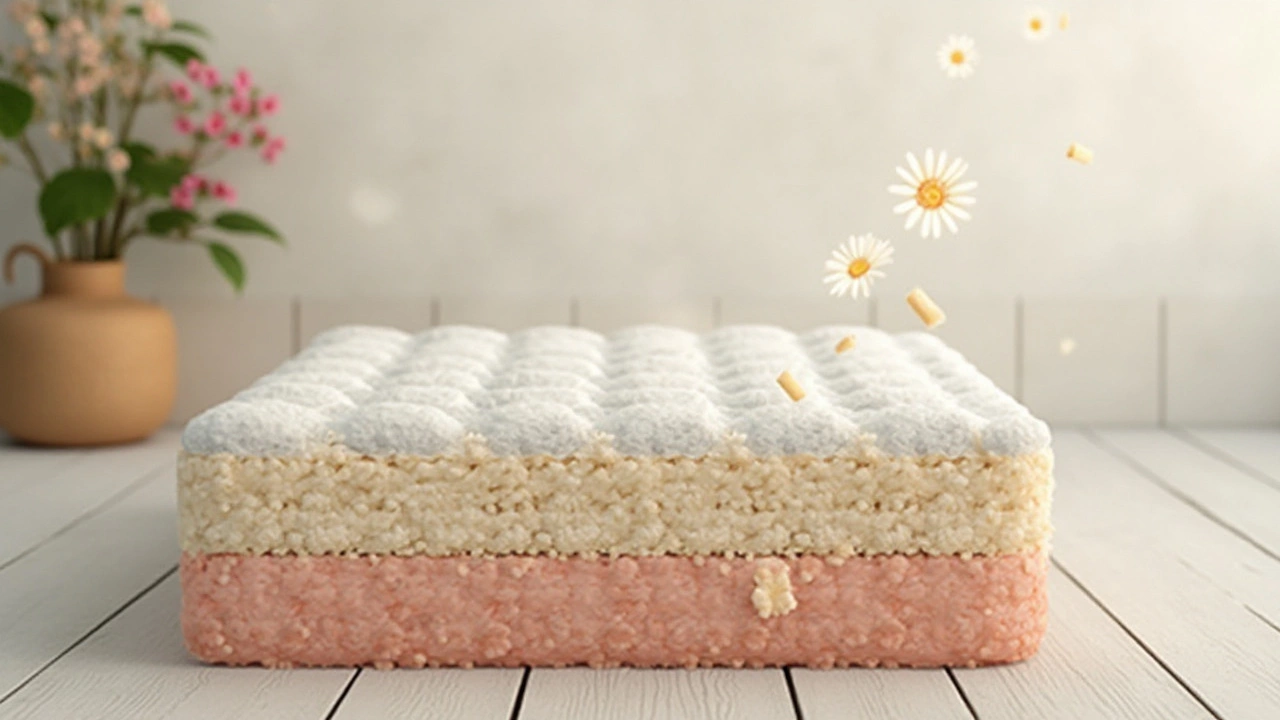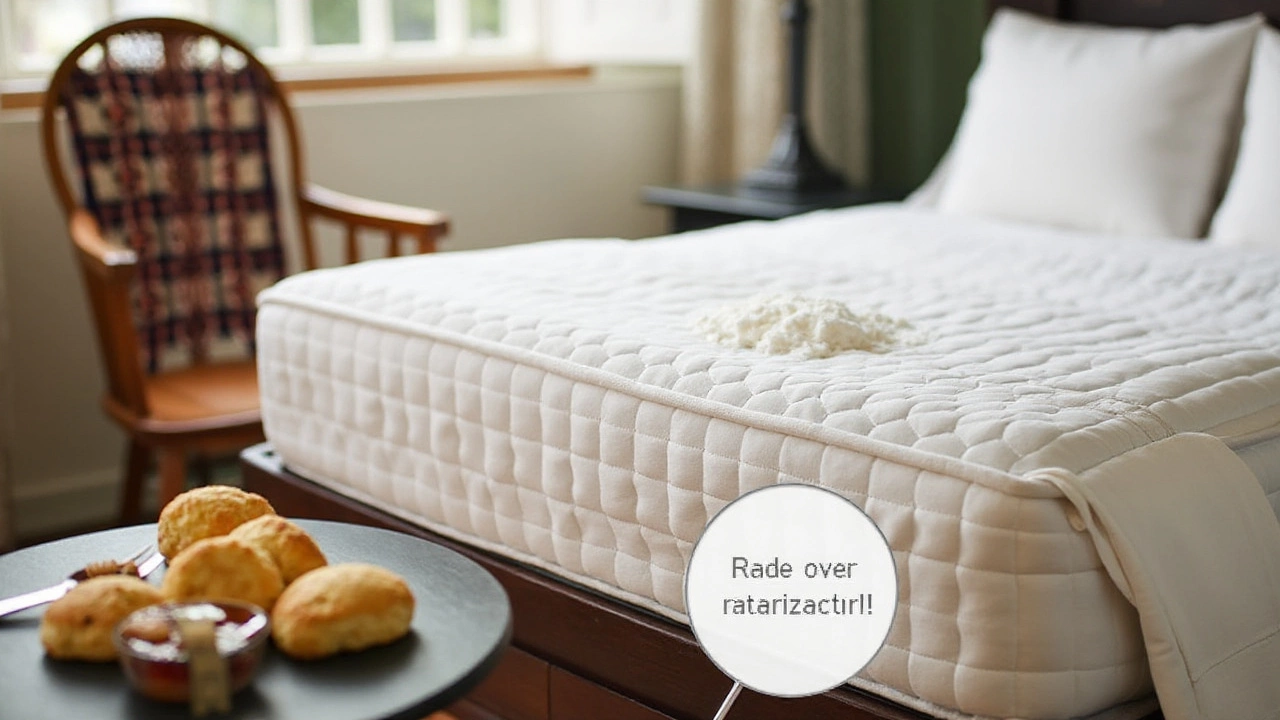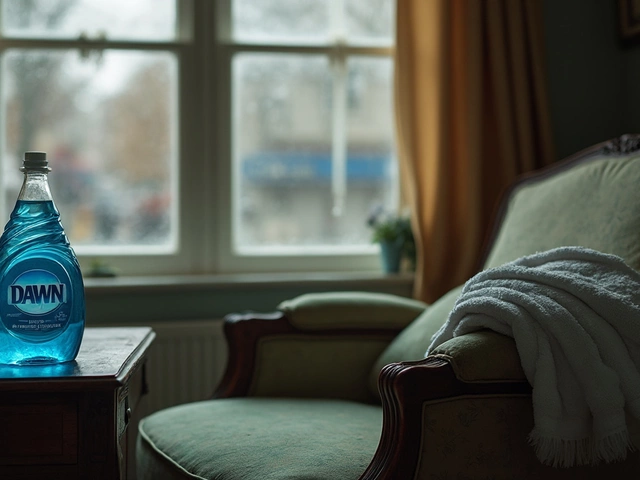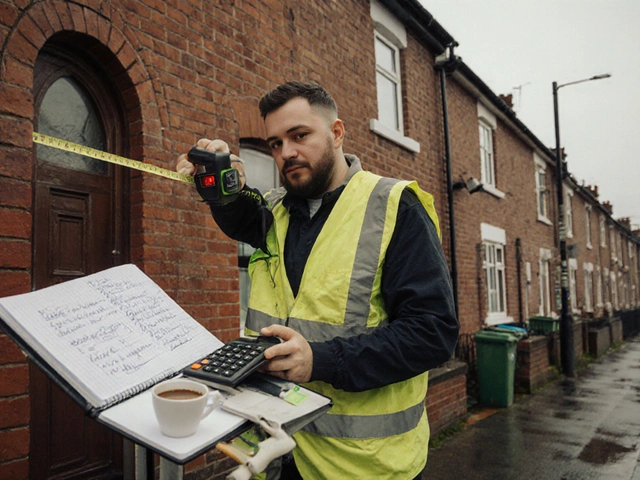The comfort of a good night's sleep often depends on the freshness of our mattress. Yet, over time, it can absorb various odors that make resting less pleasant. Enter baking soda, a humble yet powerful tool found in most kitchen cabinets, known for its impressive odor-absorbing capabilities. This article uncovers the chronological journey of how and why baking soda can be a game-changer in refreshing your mattress.
Understanding how baking soda interacts with unwanted smells can help optimize its use. Moreover, timing plays its part in this odor-neutralizing mission, and we'll guide you through making the most out of baking soda's natural properties. Whether it’s due to DIY cleaning habits or just the desire for a cleaner mattress, our practical insights ensure you’re well-equipped to tackle those stubborn smells.
- The Science of Baking Soda and Odor Removal
- Why Use Baking Soda for Your Mattress?
- How to Apply Baking Soda for Best Results
- Timeframe for Odor Removal
- Additional Tips for Mattress Care
The Science of Baking Soda and Odor Removal
When it comes to neutralizing odors, baking soda, or sodium bicarbonate, stands out for its natural effectiveness. The secret lies in its chemical structure. Baking soda is amphoteric, meaning it can react with both acidic and basic substances, making it versatile in neutralizing a broad range of odors. This unique property allows it to interact directly with the molecules causing the smell. Unlike many commercial products that mask odors with fragrances, baking soda neutralizes the smell through a chemical reaction by bringing the pH level to a more neutral state. Most odors have acids or bases as their foundation, and when such molecules come in contact with baking soda, the result is a more balanced pH and reduced ability for the odor to emit.
The porous surface of baking soda also plays a pivotal role. When sprinkled on a surface like a mattress, these tiny particles can absorb moisture, which often harbors odor-producing bacteria. This absorption isn't merely superficial; baking soda penetrates deeper into fibrous materials, working its magic to combat smell at its source. It can take time to do its job effectively, but the results are worth it. This process not only eliminates odors but can also contribute to a decrease in potential allergens that accumulate in the upholstery. According to a study published in the 'Journal of Environment and Science', products like baking soda are less likely to irritate the respiratory system compared to some commercial deodorizers.
The Chemical and Engineering News states, "Baking soda's ability to neutralize acids is one of its most well-known properties, allowing it to effectively control odors and maintain freshness in everyday applications."
Another aspect of baking soda's efficiency is its environmental friendliness. In today's world, where sustainable living is key, the use of such a natural product resonates well with environmentally conscious consumers. Unlike synthetic odor removers that can contain harsh chemicals, baking soda decomposes naturally over time and doesn't contribute to pollution. When considering the benefits, it saves both money and the planet, and the simplicity of its use makes it accessible to anyone looking to keep their home fresh. Adding to this, a notable statistic from the Environmental Working Group's database highlights that over 80% of commercial air fresheners may contain compounds that can adversely affect indoor air quality.
Why Use Baking Soda for Your Mattress?
Baking soda, or sodium bicarbonate, has gained popularity beyond the kitchen due to its remarkable ability to neutralize odors and its non-toxic nature. This dual functionality makes it an excellent choice for maintaining the freshness of your mattress. A mattress often collects sweat, dust mites, and other allergens over time, leading to unpleasant smells. Here, baking soda works its magic by absorbing these odors rather than merely masking them with a fragrance. This simple compound is made up of a chemical that reacts with the acids present in the odors, effectively neutralizing them.
One of the appealing aspects of using baking soda is its safety. Unlike many commercial cleaning products that contain harsh chemicals, baking soda is gentle enough for frequent use and won't damage the fabric of your mattress. Its mild nature means it's safe for households with young children and pets. In fact, many health experts, like Dr. Lisa Ackerley, emphasize, "Home cleaning should prioritize safety without compromising effectiveness."
Using baking soda harnesses the best of both worlds – it's safe, efficient, and inexpensive.
This substance is widely accessible, cost-effective, and environmentally friendly. A box of baking soda won't take a toll on your budget, yet it offers a powerful cleaning solution. Not only does it handle odors, but it also makes residual allergens more manageable. Those who suffer from allergies will find a noticeable difference in air quality and overall comfort when sleeping on a mattress treated with baking soda. It’s no wonder that seasoned homemakers continue to pass down this age-old remedy. For those looking for a natural way to protect their mattress investment while ensuring their health, baking soda emerges as an invaluable ally.
Moreover, using baking soda is incredibly straightforward, avoiding the need for complicated procedures that require extra time and effort. The easy application process—simply sprinkling and vacuuming—aligns perfectly with busy lifestyles. This no-fuss method appeals to many. Adding a few drops of essential oils, like lavender or tea tree, can enhance the cleaning process and infuse a pleasant aroma, making the overall experience even more delightful. With so many benefits, it’s clear why baking soda stands out in the crowded marketplace of mattress cleaning options.

How to Apply Baking Soda for Best Results
Removing stubborn odors from a mattress requires a bit of know-how and patience. The secret lies in the strategic application of baking soda. Not only does this common household product absorb odors like a sponge, but it's also gentle enough for frequent use without causing wear. Start by stripping your bed and vacuuming the entire surface to remove dust, crumbs, and pet hair. A clean surface ensures the baking soda can adhere directly to odor sources. Be deliberate in your vacuuming; going over each area multiple times guarantees a thorough clean.
Following the prep work, generously sprinkle a layer of baking soda over the mattress. For those persistent odors or if it's been a while since the last cleaning, you might want to try this trick: add a few drops of essential oil into the baking soda. Lavender or tea tree oils are particularly effective, offering both soothing scents and natural antibacterial properties. Such an approach not only tackles smells but adds an extra layer of freshness.
"Baking soda has been a staple in home care for centuries," notes Dr. Emily Thomson, a household cleaning expert. "Its ability to neutralize odors without introducing chemicals makes it irreplaceable in natural cleaning regimes."
After the application, let the baking soda sit for at least several hours. Ideally, if time permits, leaving it overnight can yield even better results. The duration allows the soda's particles to absorb odor-causing compounds thoroughly. During this time, it might be wise to coordinate the task with other chores or errands—consider this an investment in clean air and quality sleep.
Once patience has had its due, vacuum the mattress once again, removing the baking soda and any absorbed odors. A high-powered vacuum cleaner can ensure no residue remains. Check for any stubborn areas; repeat the process if necessary and if the mattress is still less than satisfactory. Consistency and a keen eye for detail make a significant difference in the long-term battle against lingering odors.
Finally, step back to assess the results. Notice any residual scents? A close examination can guide decisions for future cleanings, from increasing the baking soda's contact time to different essential oils based on seasonal preferences. Armed with these steps and insights, mattress care becomes a straightforward, rewarding routine.
Timeframe for Odor Removal
The process of using baking soda to eliminate odors from a mattress is not just about application; it's a matter of timing as well. Most people wonder how long it takes for this common household remedy to work its magic. Acknowledging the importance of timing ensures effective results, thus maximizing the benefits of using baking soda on your mattress.
Studies suggest that leaving baking soda on a mattress for at least 15 minutes can start to show results. Yet, for more pronounced odors, it’s recommended to let it sit for a longer period. Many cleaning experts advocate for letting baking soda rest on the mattress surface for up to 24 hours. This extended period allows the baking soda to thoroughly interact with the molecules causing the bad smell, absorbing and neutralizing them effectively.
The science behind this process is straightforward. Baking soda has a crystalline structure that creates a slightly basic pH environment, which helps neutralize acidic odor particles. The duration you decide to leave the baking soda on the mattress involves considering the strength of the odor and the size of the area affected. For lighter odors, a couple of hours might suffice, while stronger smells may necessitate a full day.
When applying baking soda, it's essential to consider environmental factors such as humidity or ventilation in the bedroom. High humidity might slow the baking soda's ability to bond with odor-causing compounds. Meanwhile, good air circulation can enhance the effectiveness and speed up the odor removal process.
"Baking soda is a trusted household cleaning tool due to its long shelf life and ability to combat odors," says Emily Collins, a noted home cleaning expert, in her book ‘Green Cleaning Solutions’.
For individuals seeking to tackle a persistent odor issue, combining baking soda with essential oils can be an excellent approach. Essential oils not only introduce a pleasant aroma but can also bolster the odor-fighting properties of baking soda. To utilize this method, mix a few drops of your preferred essential oil with the baking soda before applying it to the mattress. Popular choices include lavender or tea tree oil for their additional antibacterial benefits.
In conclusion, while the length of time varies based on individual circumstances, starting with a 15-minute application and considering extensions based on odor severity provides a flexible guideline. Patience truly is key in this process as the remove odor method relies significantly on allowing the soda sufficient time to work. With adjustments, this remedy can be tailored to fit the unique needs of every mattress, ensuring a fresh and clean sleeping environment.

Additional Tips for Mattress Care
Keeping a mattress in pristine condition goes beyond just eliminating odors. Routine care not only ensures that you have a fresh sleeping space but also extends the lifespan of your mattress investment. A simple yet effective practice is regularly rotating and flipping your mattress. This process, particularly if done every three months, helps in the even distribution of wear and tear, reducing potential sagging and indentations. A 2017 study highlighted that regular rotation contributes to a 30-50% increase in mattress longevity, illustrating the tangible benefits of this habit.
Encompassing your mattress with a protective cover can be tremendously beneficial. Not only do these covers act as a barrier against unwanted dust mites and allergens, but they also shield against accidental spills and stains. When selecting a cover, opt for hypoallergenic materials, which further enhance your sleep quality by keeping allergens at bay. Moreover, these covers are often machine washable, making maintenance a breeze and keeping your bed in tip-top condition.
In tandem with using baking soda to remove odors, routinely vacuuming your mattress can play a pivotal role in its upkeep. This practice, especially when done monthly, can effectively remove dust and debris that accumulate over time. To vacuum correctly, utilize the upholstery attachment and traverse the entire surface methodically. An expert from the Sleep Foundation recommends,
"Incorporating regular vacuuming into your mattress care regime can significantly reduce allergen build-up, offering a cleaner sleep environment."To maximize cleanliness, consider a handheld steam cleaner for periodic deep cleans to eliminate bacteria and mites.
Sunlight is another simple and effective way to cleanse your mattress. By exposing the mattress to direct sunlight for a few hours, you naturally leverage UV rays to kill bacteria and reduce moisture that promotes mold growth. This air-drying method is particularly beneficial in humid climates where moisture can contribute to unpleasant odors over time.
Intentional environment control within your bedroom aids in mattress preservation too. Maintaining a cool, dry room reduces humidity levels that exacerbate odor problems. With smart home advancements, many homeowners utilize dehumidifiers or air purifiers to assist in achieving optimal conditions. These devices tackle airborne particles, enhancing overall sleep quality.
Lastly, investing in high-quality bedding makes a noticeable difference. The right type of bed sheets and comforters, particularly those with moisture-wicking properties, not only contribute to sleeping comfort but also aid in keeping the mattress dry and odor-free. Look for materials like bamboo or cotton blends known for their breathability and ability to regulate temperature effectively.
By integrating these strategies into your routine, mattress care becomes a seamless part of life that yields exceptional returns in comfort, health, and the longevity of your sleeping haven. Regularly revisiting these practices ensures your mattress remains a delightful refuge rather than a neglected afterthought.




